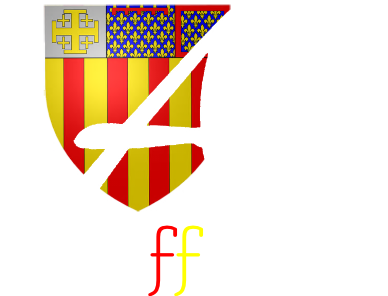

























JEANNE D'ARC, appelée aussi la « pucelle d’Orléans », est née à Domrémy (Vosges) le 6 janvier 1412.
Elle est considérée comme une héroïne nationale pour avoir redonné la légitimité au roi Charles VII et délivré le royaume du joug des Anglais en pleine guerre de Cent Ans. Après différentes péripéties tenant autant des faits réels que de la légende, à 18 ans, elle est capturée par les Bourguignons et remise aux Anglais. Un tribunal de l’Inquisition la condamne à mort pour hérésie.
JEANNE D'ARC est brûlée vive sur la place de Rouen le 30 mai 1431 à l’âge de 19 ans.
Vingt-
Elle est béatifiée (bienheureuse) en 1909 puis canonisée « Sainte Patronne de France » en 1920.
A voir :
La Fontaine aux Anciens Combattants d’Aix, sculpture en bronze réalisée par Jean LAMORE en 2013. La lionne symbolise la protection de la mémoire. Elle abrite dans le sanctuaire de sa poitrine, la mémoire du soldat tombé au champ d’honneur. Elle rend hommage aux morts des guerres :
1914-
1939-
1946-
1954-
Remarque d’odonymie :
À la fin du XIXe siècle, Jeanne d’Arc est devenue une héroïne nationale. En 1894, Benjamin ABRAM renomme alors logiquement la Place des MARRONNIERS, sans origine particulière, en Place JEANNE D'ARC. S’il avait su qu’en 1920, elle allait devenir un des plus forts symboles de l’Église catholique, sans doute aurait-
JEANNE D'ARC (JOAN of ARC), also called the "Virgin of Orléans", was born in Domrémy (Vosges) on January 6, 1412.
She is considered a national heroine for having restored legitimacy to King Charles VII and delivered the kingdom from the yoke of the English in the midst of the Hundred Years War. After various adventures based as much on real facts as on legend, at 18, she was captured by the Burgundians and handed over to the English. An Inquisition court sentences her to death for heresy.
JOAN of ARC was burnt alive on the lace of Rouen on May 30, 1431 at the age of 19.
Twenty-
She was beatified (blessed) in 1909 and then canonized “Saint Patroness of France” in 1920.
To see :
The Fontaine aux Anciens Combattants d´Aix, bronze sculpture created by Jean LAMORE in 2013. The lioness symbolizes the protection of memory. In the shrine of her chest, she holds the memory of the fallen soldier. It pays homage to the war dead:
-
-
-
-
Odonymy note:
At the end of the 19th century, Joan of Arc became a national heroine. In 1894, Benjamin ABRAM then logically renamed the Place des MARRONNIERS, without any particular origin, to Place JEANNE D'ARC. If he had known that in 1920 she would become one of the strongest symbols of the Catholic Church, no doubt he would have revised his choice ...
